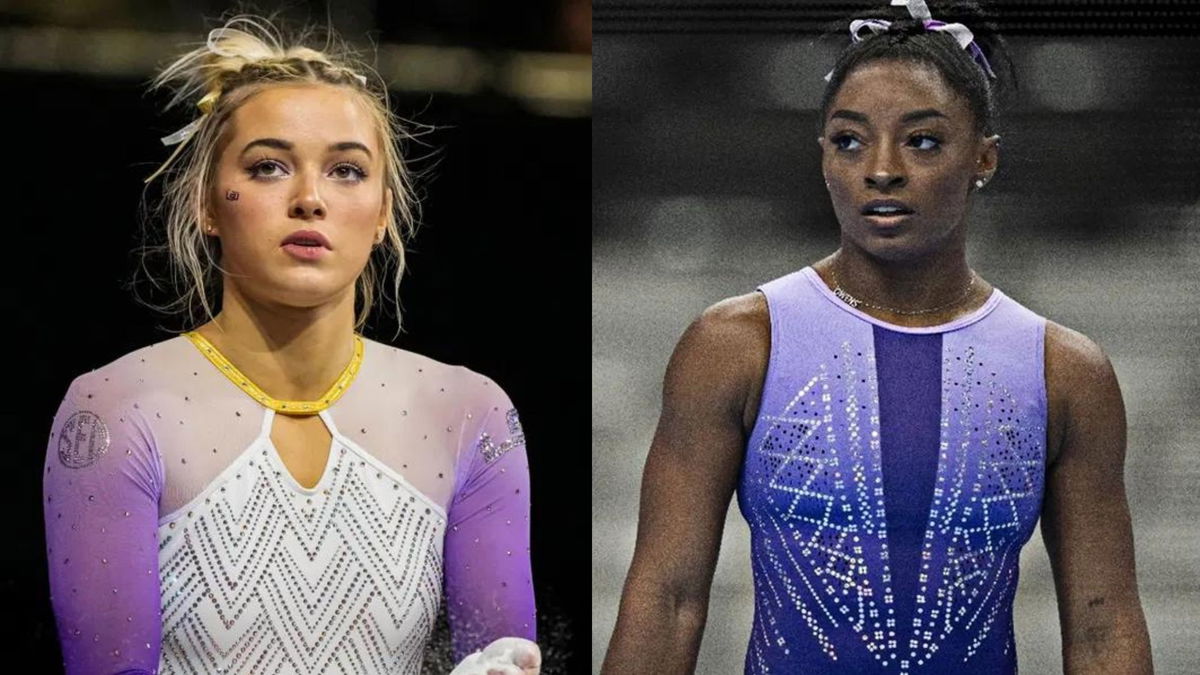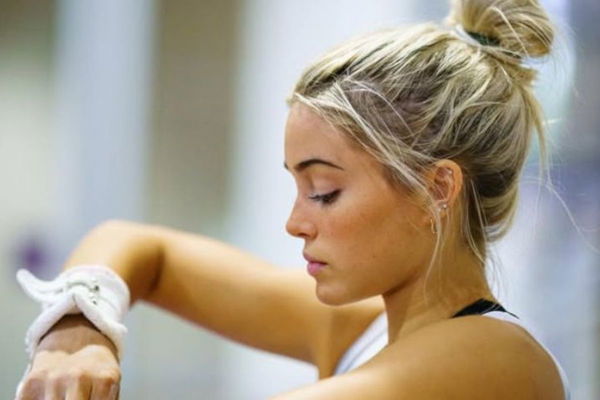
Imago
Credits: IMAGO

Imago
Credits: IMAGO
Once Olivia Dunne’s follower count crossed into the millions, something shifted. No longer just a college gymnast, she found herself treated like a public figure, every post subject to judgment, every image dissected. It wasn’t just the bright side of sudden fame. It was pressure. Intense, constant, and personal. In a moment of vulnerability months ago, Dunne revealed that the surge in social media attention after the NCAA’s NIL policy took effect left her uncertain of how to balance appearance and performance. “I just didn’t know what to do. And it was really hard with body image for a while,” she said. For someone who trains to compete, not to pose, this sudden collision between athletics and aesthetics sparked a deeper, more private struggle.
Watch What’s Trending Now!
At the height of her social media explosion, Livvy Dunne found herself trapped in an impossible contradiction. “I had a hard time balancing, you know,” she admitted. Should she eat like a gymnast or like a model? Could she do both? The pressure to appear effortless while maintaining elite-level fitness left her chasing an image that didn’t always align with the discipline required in the gym. She found herself turning to Photoshop, not out of vanity, but from a place of self-doubt. “I truly was not confident in myself,” she shared. “It’s a normal thing. You can do it if you want. You don’t have to.” But in her case, the filters became a crutch during a time when perfection felt mandatory.
The turning point came gradually. It wasn’t a single moment of revelation, but a process that demanded patience. During a shoot with Sports Illustrated, surrounded by women who embraced their physiques without hesitation, Dunne began to recalibrate her relationship with her own image. “It was a timely process to learn to love those muscles,” she confessed while having a conversation with Stephanie McMahon in What’s Your Story? With Steph McMahon. Livvy added, “It was not overnight. So I want people to know that I didn’t just decide one day that I was confident and drop into a split.” That shoot, as she described it, wasn’t just about the photos. It was a rare space where confidence was cultivated, not assumed. “I dropped into a split and I was like, yeah, I did that.”
ADVERTISEMENT
The confidence didn’t emerge in isolation. LSU head coach Jay Clark’s influence proved pivotal. While social media pulled Olivia Dunne in one direction, Clark anchored her in the sport. “The main thing is to just keep them… in the process and not letting them… get distracted,” he said. In a season where Dunne went on to win an NCAA title, that guidance proved essential.

Imago
Credits- Instagram/Olivia Dunne
Today, her voice reaches not only fans but young athletes navigating the same expectations. “Body image stuff, it does not change overnight,” she said. But in time, and with the right support, it can evolve, just as she did for NCAA champ and social media sensation Olivia Dunne. However, she isn’t the only one to have faced these challenges. Her confession echoed the words and struggles of the Gymnastics GOAT, Simone Biles.
ADVERTISEMENT
Simone Biles reveals how she stopped hiding her muscles and started owning them
In the early years of her gymnastics career, Simone Biles chose to hide her arms under sweaters, regardless of the weather. Why? To save herself from constant public scrutiny! The most decorated gymnast in history did not always carry the ease and poise the public now associates with her. As a teenager, she fielded taunts about her muscular frame. “They used to call me a ‘swoldier,’ which didn’t make me feel the best,” Biles recalled. In response, she covered up. Not because she lacked athletic confidence, but because she had yet to accept the shape her work had created.
ADVERTISEMENT

Reuters
Paris 2024 Olympics – Artistic Gymnastics – Women’s Balance Beam Final – Bercy Arena, Paris, France – August 05, 2024. Simone Biles of United States in action on the Balance Beam. REUTERS/Amanda Perobelli
Her journey toward body confidence did not hinge on public affirmation or endorsements. It developed in private, in the company of teammates who shared her build and understood its purpose. “As gymnasts, we look similar to each other, so we’ve helped each love our bodies because it helps us with what we do,” she explained. With time and support from peers like Aly Raisman, who consistently emphasized the importance of self-respect, Biles slowly embraced the very features she once wished to conceal. “Now, I show off my arm all the time,” she said with clarity, offering a glimpse into how far she had come. “I wish I could tell my younger self to be positive about my body, because when you learn to love your body, you learn to fall in love with yourself.”
For Biles, confidence stems not from appearance alone, but from autonomy. “To me, healthy body image is when you feel confident with yourself — inside and out,” she said. And if some days include imperfect hair or no makeup, then so be it. “You’re human, too, so do what you like.” The queens themselves have confessed how the only thing that must matter te most is accepting and loving your body without letting the noise get to you. In choosing to embrace her strength rather than conceal it, Simone Biles and Olivia Dunne have offered young athletes a lasting lesson. That is self-acceptance is not a performance, but a practice.
ADVERTISEMENT
ADVERTISEMENT
ADVERTISEMENT
ADVERTISEMENT

